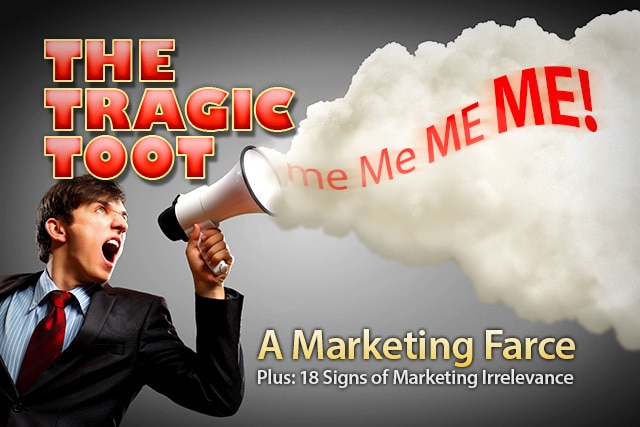![]()
In her new book Digital Relevance, Ardath Albee mentions that an Adobe study found that “76% of marketers think marketing has changed more in the past 2 years than it did in the previous 50.” Yet in financial services, I continue to see marketers cling to old ways in spite of the fact that they’re becoming increasingly irrelevant. Financial services technology is notoriously difficult to market. Yet the industry has also been very slow to adopt modern digital and content marketing principles and strategies. In many companies, marketing is relegated to either being the loudspeaker broadcasting company announcements or the “make it pretty department.” Which is ironic, considering the technologically avant-garde nature of the industry.
In the book, Albee lists a number of ways that marketers can ensure the work they’re doing is irrelevant.
How do you know if your marketing content is irrelevant? Here are 18 signs, some from Albee’s book and some from my experiences with FinTech companies:
(I highly recommend that you buy the book and read it this weekend. It’s excellent and will help you completely re-think how to make sure your marketing strategy is both relevant and effective for influencing sales.)
Here are the 18 signs that your marketing content is irrelevant:
- Your digital newsletter is company-centric. It primarily includes announcements of product enhancements and releases, new hires, awards, and recent wins.
- Your case studies highlight the product and how it’s being used, but offer very little insight into the problems the client is solving or how they solved them. They make the product the hero instead of the client.
- Your corporate Twitter and LinkedIn accounts consist of a string of updates related to company PR and promoting recent blog posts but include little or no engagement and don’t share external content or insight.
- The most updated section of your website is the news page.
- Your webinars are really just thinly veiled sales pitches and product demos, even if they include a client or external speaker.
- Your trade show booths are designed to collect leads, and you measure success based only on the net new leads collected.
- Your trade show follow-up consists of passing the new lead information to the appropriate sales person and adding the name to your email list, with no other strategy for thought leadership or follow-up.
- Website visitors who fill out forms to download a white paper or attend a webinar are immediately sent to sales for follow up.
- Sales people follow up on marketing leads with no insight into how the lead was generated or where their interest lies, and then do no homework before calling.
- Marketing collateral consists of sell sheets with a long list of features and benefits but little or no insight about how to solve business problems.
- Videos on your website are either “talking heads spewing boastful claims,” banal client testimonials that convey zero insight, or product demos.
- Your buyer personas (if you have them at all) consist of vague information provided by product managers that are based on justifying the product strategy rather than being sourced from real interviews of clients, prospects, and deals that were recently lost.
- Your display, banner and search ads send leads to the home page rather than being integrated into content strategies.
- Prospects get an inconsistent experience, story and message as they interact with your firm across marketing channels (website, email, blog, advertising, PR, media, sales calls, live events, webinars).
- When you do publish content that is benefit focused, it presents benefits that are so high level that they’re not believable because they’re not accompanied by evidence for how the benefit is achieved.
- Your premium content consists primarily of analyst reports and other third party content that does little to convey a distinct voice or point of view. As Albee points out in her book, customers “are continuously looking for sources of competitive advantage in their relationships with vendors, and they’re not going to find it if your position in the marketplace resembles the stance of Switzerland.”
- The majority of your blog posts are really just product positioning and thinly veiled sales pitches, or your blog consists of curated content and content farm copy that doesn’t provide unique insight or helpful information that guides prospects through their decision process.
Today’s buyer is more savvy than vendors give them credit for. It’s time to start providing them with the information they need and earning their trust. It’s not a numbers game, it’s about helping real people with real problems. As this series on content relevance progresses, we’ll start to uncover what it takes to reach customers and boost your content marketing ROI.
In the meantime, if you see your marketing in these 18 points, let’s talk. We can spend 30 minutes on the phone doing a quick content assessment that will give you some ideas of how to make your marketing relevant to your target audience. Call me at +1 970-300-2280.
- 4 Steps to Optimize Your LinkedIn Profile for Sales Prospecting – February 12, 2021
- The Reality of Cold Calling for B2B Sales – January 11, 2021
- Can Inbound Marketing Generate Enough Leads? – January 9, 2021







